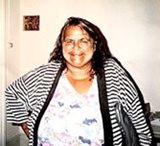Whadjak Noongar Country
Karrinyup wish to acknowledge the traditional custodians of this land, the Whadjuk people of the Noongar nation and their Elders past and present. We acknowledge and respect their continuing culture and the contribution they make to the life of this city and this region.Aboriginal and Torres Strait Islander people should be aware that this website contains names and images of deceased persons.
Background
The name "Karrinyup" was derived from the name of a local swamp called "Careniup", an Aboriginal word meaning 'the place where bush kangaroos graze'.
The Nyoongar people have occupied and managed the southwest of Western Australia for over 40,000 years. Nyoongar is the name for the indigenous people whose ancestors originally occupied and still occupy the whole southwest area. The word Nyoongar means ‘person’ or ‘people.’
As the Nyoongar language was not written prior to colonisation, there are many spellings of the word Nyoongar, and indeed most Nyoongar words. Nyoongar boodjar (people’s country) is comprised of at least 13 Nyoongar groups; the Wadjak Nyoongar people traditionally occupied the country that is the Perth Metropolitan area.
The Mooro people’s country lies within Wadjak country and within the City of Stirling local government area. The Mooro people traditionally lived in extended family groups, caring for country through cultural ceremonies such as song, dance and use of fire.
History
Land at Karrinyup was first granted to Samuel Moore in the early 1840s.
Samuel Edward Moore (born 1803 in Ireland) was a prominent early settler in colonial Western Australia, a merchant, pastoralist and a politician. His older brother, George Fletcher Moore, a lawyer, arrived at the Swan River Colony in October 1829, and was granted land on the Avon and the Swan Rivers. Samuel and his wife came to the Swan River Colony following his brother's favourable reports of great prospects there.
In the 1840s, Moore took up a grant of 780 acres (3.2 km2) in the northern part of the suburb, now known as Karrinyup. Moore's grant, was surveyed in 1844 by P. Chauncey, who recorded a large swamp just to the east of Karrinyup as Careniup Swamp. The property passed through many hands in the 19th Century until being acquired by W. Maley in 1909. Charles Stoneman subdivided another grant in the Karrinyup area into sixth-of-an acre lots in 1904. Many of these blocks were sold over the next ten years, however no roads were built and few houses constructed. Rapid growth in Karrinyup did not begin until 1957, when the 1904 subdivision was redesigned to allow extensive residential development.
First Nations Art at Karrinyup
Name of art - Kura Careniup
Artist - Justin Martin
Justin is a local man that was raised in Karrinyup and found his love of art through painting and stories from his Grandmother the late Joan Margaret Martin (now deceased), a local Karrinyup Elder and traditional artist. The commissioned art piece Justin created for Karrinyup is called “ Kura Careniup" meaning the place where yongas (kangaroos) graze.
The art piece stands 5m x 2 m and is a creation for Karrinyup. A vivid description of the land using colours blues and turquoise for the coastline and greens and yellows for the lake lands. Traditional Nyungar line work was formally done by the men to give connection to country. We all have a connection to country which is shown within the centre point of the artwork. Justin designed this artwork to show the central location of Karrinyup Shopping Centre with the linework as a guide including the lake and the coastline. The vision for the project was to create an artwork that reflects the traditional values of this area with colours that are eye catching and interactive and mirror sheet metal that would represent the glisten of the summer sun and also allow customers enjoying the art to see their reflection inside the art, allowing them to feel a connection to the land.

West Deck Projections
As part of Karrinyups always on projections we are showcasing 5 pieces of art from Indigenous local artist Joan Margret Martin nee Lewis (deceased), a well-known Aboriginal Artist and grandmother to Justin Martin.
This art had never been seen before its premier at Karrinyup during NAIDOC 2022. All paintings are traditionally painted using earth tones telling the story of creation, birth, marriages and connection to land.

Creation
The rainbow serpent is the creator of life for most Aboriginal tribes in Australia. In Western Australia there were three that carved out the land from central Australia. Two travelled west throughout the mid-west and one that travelled south to the south west. In Nyungar country we call this serpent the Waagal. It is important to acknowledge this magical creature on country by grounding yourself and throwing some sand in our water ways before commencing activities.
The Bush Turkey
Turkeys are territorial animals which over there life time would commonly visit feeding grounds and water holes throughout the country. These particular water holes, that the turkey visits, were also used by Aboriginal men for traveling the lands. The Turkeys mate for life. When either paired turkey dies the other turkey partner will cry itself to death. The art work is a representation of those special waterholes and the connection that the male and female turkeys have to each other.
Bungarra Dreaming
In the beginning all moieties were large creatures. The Bungarra was a large monitor lizard and had part in moulding the lands. He created a smooth rock called granite. He rubbed his body over the large granite surfaces moulding it throughout the country. You will often find crystal streak’s or segments of crystal cohorts where he dragged his tail. In the traditional times the granite was used for traps. Aboriginal people would place a large flat rock on top the granisite for reptiles and animals to shelter they would then be easily hunted by the aboriginal men of the tribe. This artwork outlines spiritual importance of rock formations and how they were made by the giant Bungarra and used by the people.
Moieties
Tribal moieties were plants and animal species commonly found within the traditional grounds of a tribe. Individual moieties were given to individuals by grandparents on the characteristics of a childs behaviour. Nyungar elders had the duty to select the moieties for each individual members of the tribe. That member then had the duty of looking after the safety and care of their moieties. This artwork shows the tribal moieties of the ninghan, weitj, yonga, and kardar. The centre piece is our next generations moieties. In some cases the spirit animal chooses you with a friendly visit.
Spirit Line
Our lives have a spirit line that is guided by our old spirits of the land. The artwork reflects thousands of generations guiding our young through life and on into the afterlife, elders looking on over our decisions and the choices we make guiding us down the right path.
